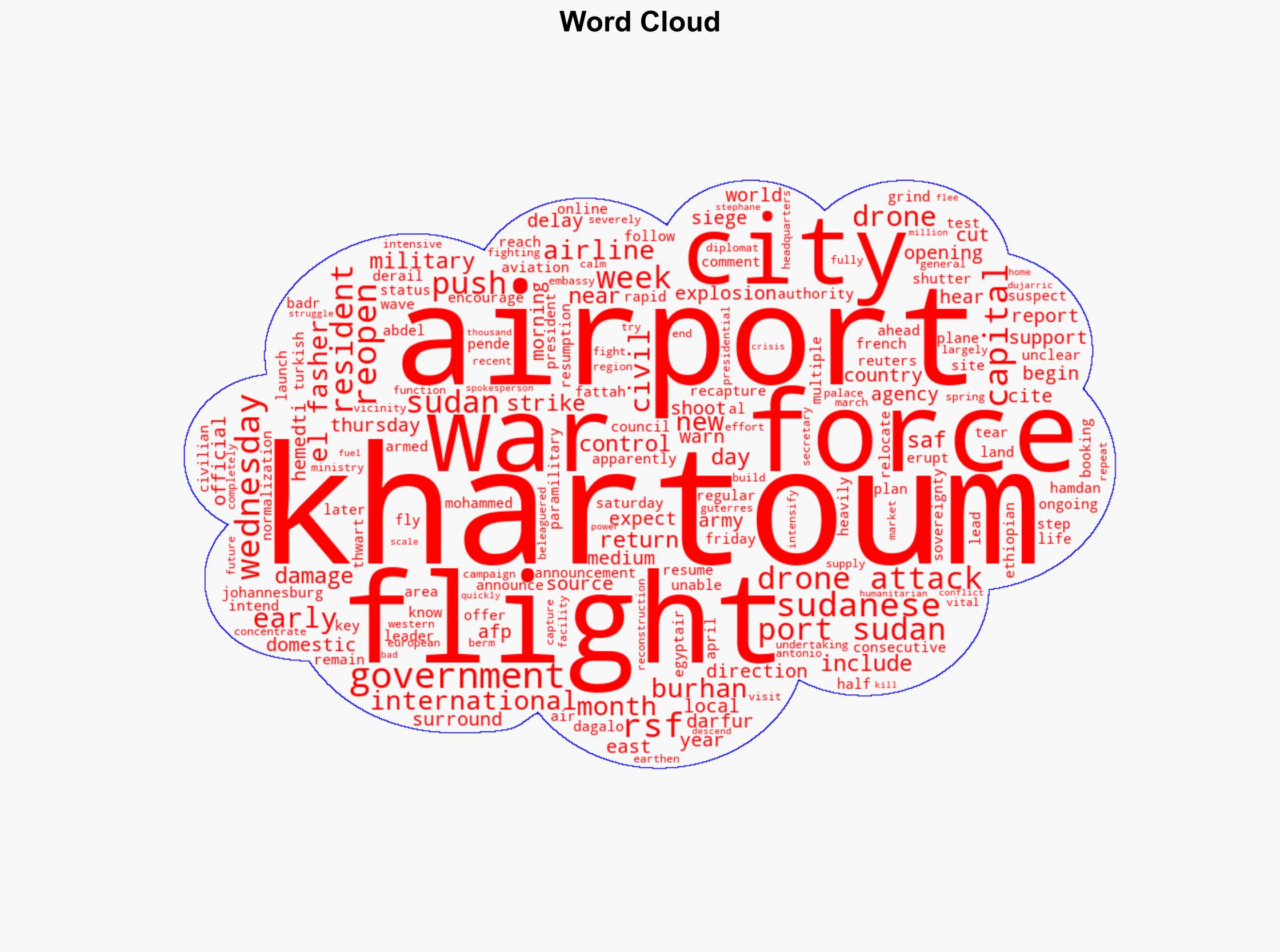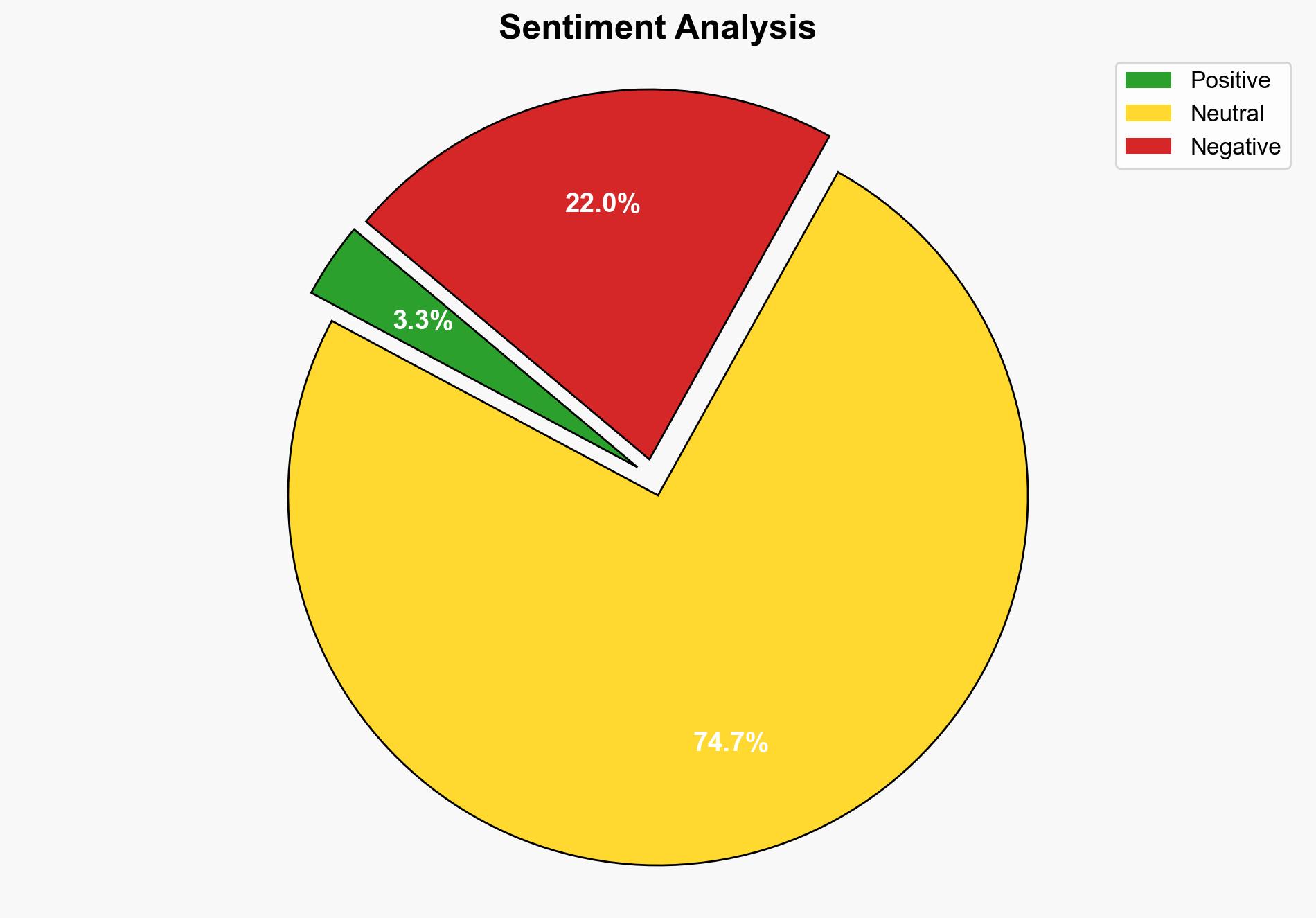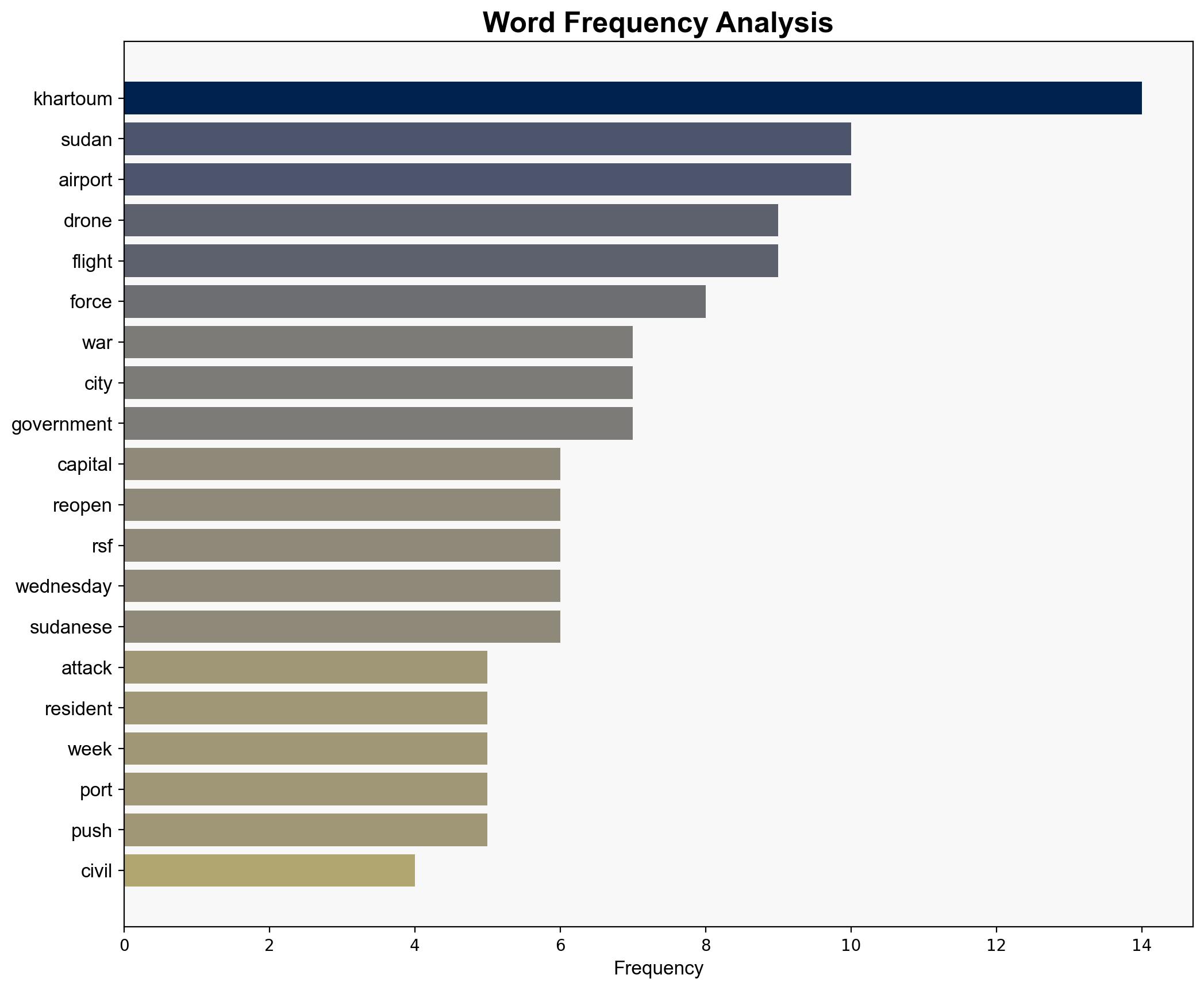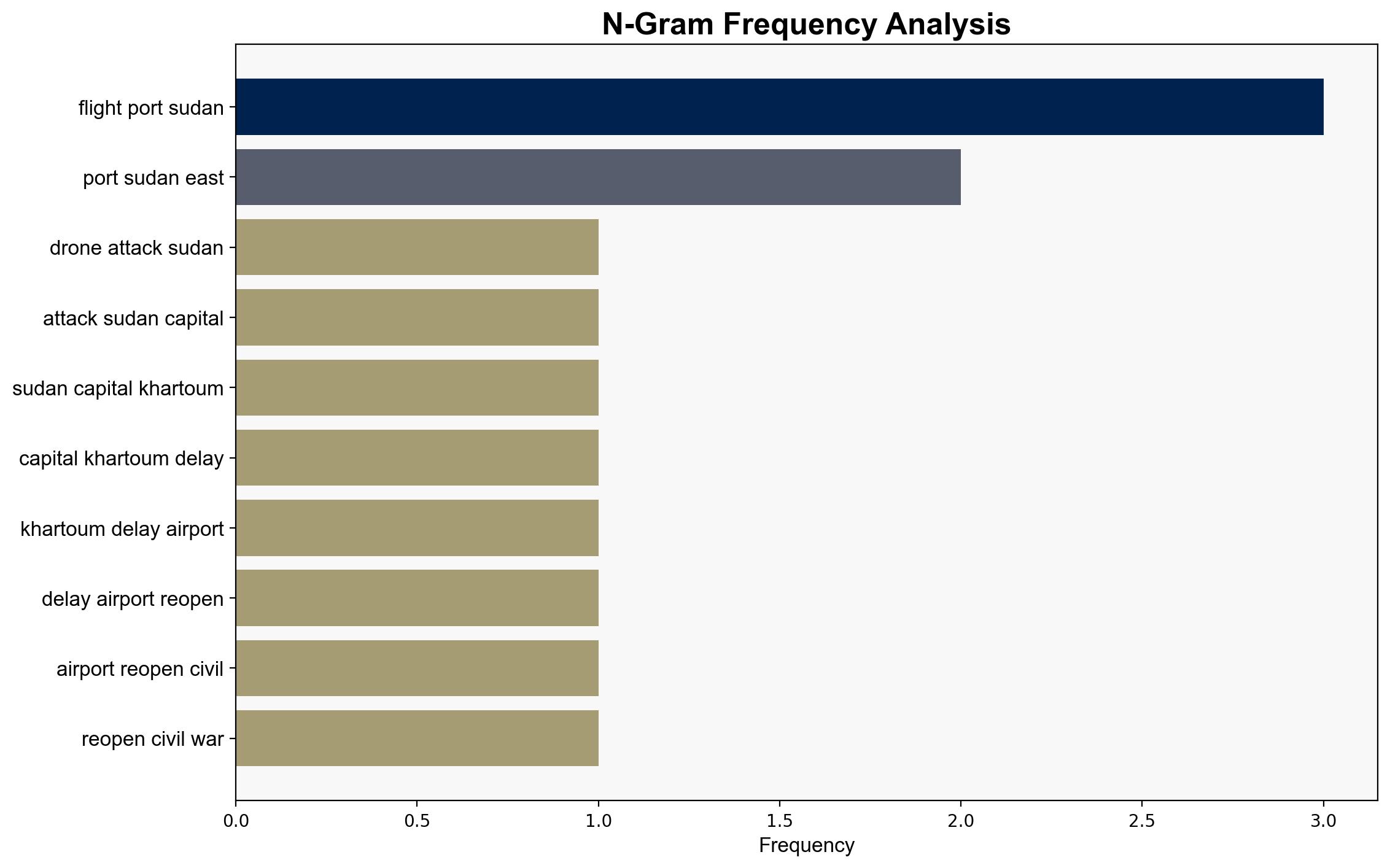Drone attacks appear to scupper Sudan capital’s airport reopening – CBS News
Published on: 2025-10-22
Intelligence Report: Drone attacks appear to scupper Sudan capital’s airport reopening – CBS News
1. BLUF (Bottom Line Up Front)
The most supported hypothesis is that the drone attacks are a strategic maneuver by the RSF to maintain control over Khartoum and disrupt government efforts to normalize the situation. Confidence level: Moderate. Recommended action: Increase intelligence gathering on RSF capabilities and intentions, and strengthen diplomatic efforts to mediate between conflicting parties.
2. Competing Hypotheses
1. **Hypothesis 1**: The RSF is deliberately using drone attacks to prevent the reopening of Khartoum’s airport, aiming to undermine government authority and maintain strategic control over the capital.
2. **Hypothesis 2**: The drone attacks are part of broader regional instability, possibly involving external actors, aiming to destabilize Sudan further for geopolitical gains.
Using ACH 2.0, Hypothesis 1 is better supported due to the RSF’s known military activities in Khartoum and their strategic interest in controlling the capital. Hypothesis 2 lacks direct supporting evidence of external involvement.
3. Key Assumptions and Red Flags
– **Assumptions**: It is assumed that RSF has the capability and intent to carry out drone attacks. It is also assumed that the Sudanese government is genuinely attempting to normalize the situation.
– **Red Flags**: Lack of direct evidence linking RSF to the drone attacks. Absence of official statements from the Sudanese government raises questions about transparency.
– **Blind Spots**: Potential external influences or support for RSF are not fully explored.
4. Implications and Strategic Risks
The continuation of drone attacks risks escalating the conflict, potentially drawing in regional actors and exacerbating the humanitarian crisis. Economic impacts include disrupted trade and diminished foreign investment. Geopolitically, prolonged instability could shift alliances and influence power dynamics in the Horn of Africa.
5. Recommendations and Outlook
- Enhance surveillance and intelligence-sharing with regional partners to monitor RSF activities.
- Facilitate diplomatic dialogue between conflicting parties to de-escalate tensions.
- Scenario Projections:
- Best Case: Successful mediation leads to a ceasefire and airport reopening, stabilizing the region.
- Worst Case: Escalation of conflict with increased foreign intervention and humanitarian crisis.
- Most Likely: Continued sporadic violence with intermittent government efforts to regain control.
6. Key Individuals and Entities
– Mohammed Hamdan Dagalo (Hemedti)
– Abdel Fattah al-Burhan
– Badr Airlines
– Sudanese Armed Forces (SAF)
– Rapid Support Forces (RSF)
7. Thematic Tags
national security threats, regional instability, conflict resolution, geopolitical dynamics




